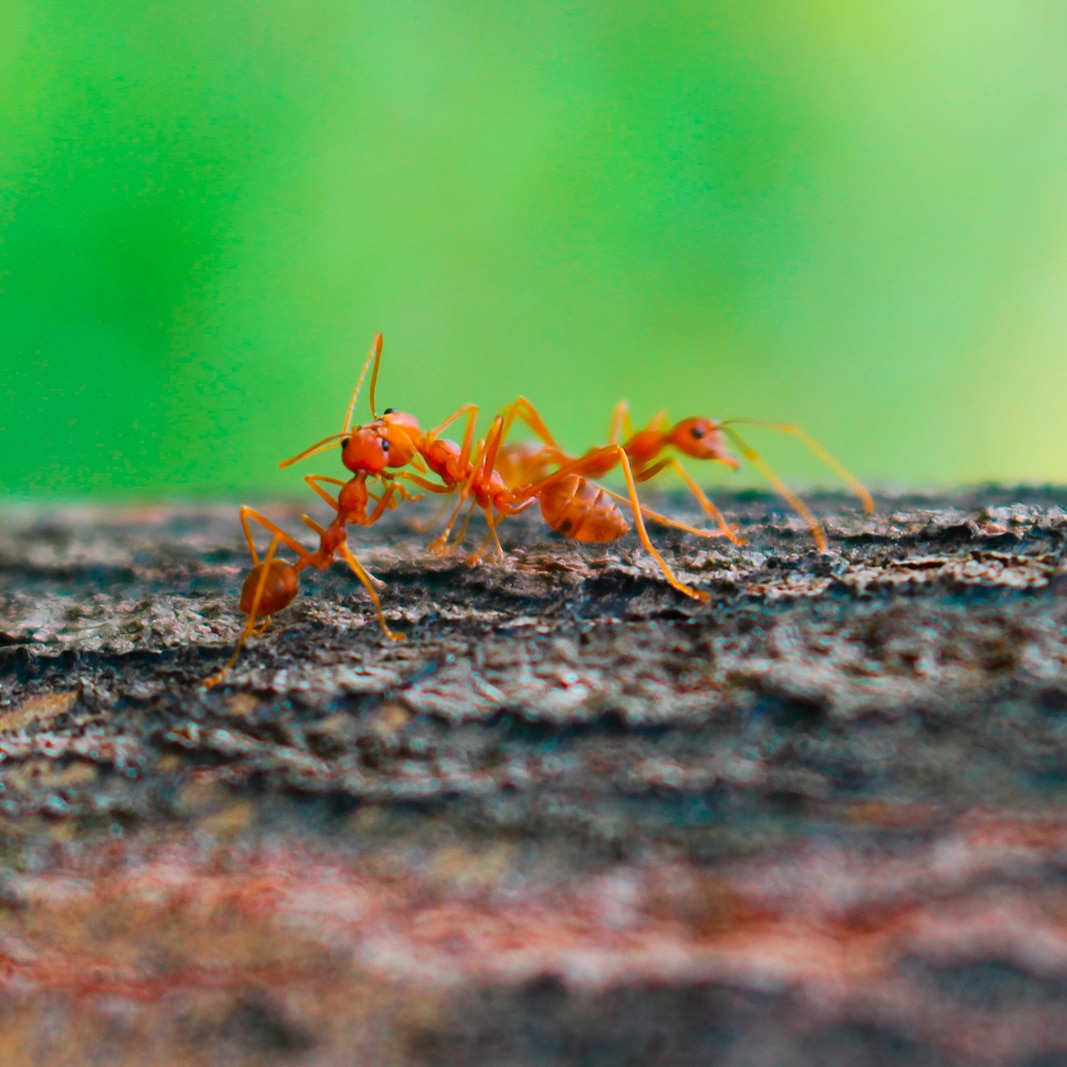
• Reliable And Trustworthy
• Responsive Proactive Solutions
• Detail-focused for lasting results
EXCELLENTTrustindex verifies that the original source of the review is Google. Great communication, on time, pleasant and thorough. Highly recommend.Posted onTrustindex verifies that the original source of the review is Google. Adam was extremely efficient in his work at our home. He provided follow up messages to confirm the inspection date & arrived on time. Adam explained all the details involved with the pest inspection & the expected timeframe. Once the work was completed, Adam called & discussed his report & outcomes. I felt completely comfortable with Adam being in our home & he has a quiet yet confident manner. I can highly recommend Adam for any pest inspection required.Posted onTrustindex verifies that the original source of the review is Google. Can't recommend Adam and his team enough, they were super reliable and carried out their work with utmost professionalism. Thank you again for taking car of my mother in laws place, we will definitely be using you again! 🙂Posted onTrustindex verifies that the original source of the review is Google. I would highly recommend Adam at Vital Pest Control for his friendly customer service, extensive knowledge and fantastic and thorough work. We have used Vital Pest Control for a few years and are always very happy with the quality and longevity of the spray. Adam is always happy to provide information about service and products and is on time and efficient.Posted onTrustindex verifies that the original source of the review is Google. As a first time home buyer we used Adam prior to us moving in He was prompt, thorough, professional and easy to work with Can 100% guarantee I will be using him againPosted onTrustindex verifies that the original source of the review is Google. Adam was amazing very professional he explained everything and was very thorough taking great care in providing a professional service. I would highly recommend.Posted onTrustindex verifies that the original source of the review is Google. Have used well known pest contoll for over ten years. Recently standard of their work had fallen. Rang adam at vital pest control. Could not reccomend him highly enough. Thankyou adam and we will see you in twelve months. Mark and julie hillPosted onTrustindex verifies that the original source of the review is Google. Quick reliable service, highly recommend looking fwd to our next annual servicePosted onTrustindex verifies that the original source of the review is Google. Punctual, good job done & very friendly service.Posted onTrustindex verifies that the original source of the review is Google. Highly recommend. Turned up on time and provided a great and efficient service. We are due for another spray soon and will definitely get them back as we haven’t had a pest issue since the last visit.
Looking for effective Ant Control On The Central Coast NSW? You’re in the right place! Vital Pest Control is here to help. Our reliable and trustworthy service tackles ant problems with precision and care. Discover expert tips and solutions that make a difference.
Ant Species Identification
Identifying ant species is crucial for effective control. Different ants have distinct behaviours and preferences. Knowing which species you’re dealing with helps tailor the solution. Our team excels at pinpointing species, ensuring targeted, effective treatments.
Ant Baiting Systems
Ant baiting systems offer a proactive solution. They target ants at the source, disrupting their colony. Our systems are responsive, providing results that last. This strategy offers peace of mind, knowing your home is protected from ant invasions.
Ant Nest Location
Finding ant nests is vital for complete ant control. Our detail-focused approach locates nests effectively, eliminating the problem at its root. This ensures ants don’t return, giving you long-term relief from infestations.
Carpenter Ants
Carpenter ants can cause significant damage. They burrow into wood, compromising structural integrity. Our expertise in handling carpenter ants ensures your property remains safe and sound. We offer solutions that protect against costly repairs.
Outdoor vs. Indoor Ants
Understanding the difference between outdoor and indoor ants is essential. Outdoor ants can become indoor pests. We offer comprehensive solutions, addressing both areas to keep your home ant-free. Our strategies are tailored to your specific needs.
Food Storage & Sanitation
Proper food storage and sanitation are key to preventing ant invasions. Simple practices like sealing containers and regular cleaning make a big difference. Our advice helps maintain a clean, ant-free environment effortlessly.
Ready to tackle your ant problems? Discover how we can help you today!

Struggling with ant invasions at home? Discover effective ant control on the Central Coast NSW with Vital Pest Control’s expertise.
Ants are fascinating creatures with a significant presence on the Central Coast of NSW. Understanding their unique characteristics can help in effective identification and management. With numerous species in the region, recognising their distinct features is essential for homeowners and businesses alike. This guide will delve into common ant species found in the area, providing insights into their behaviour and appearance.
Coastal Brown Ants
Coastal brown ants, often seen in large numbers, are a common sight on the Central Coast. These ants thrive in both urban and rural settings, often forming extensive colonies. Their shiny, light brown bodies and affinity for sugary substances make them easy to spot. Observing their trails can help identify their nests, which are typically found in sandy soils or under paving stones.
Green Tree Ants
Known for their vibrant green colour, green tree ants are a unique species in the region. These ants build nests in trees, using leaves and silk produced by their larvae. They are arboreal and are often seen moving in single file along branches. Green tree ants are known for their aggressive nature, particularly when defending their nests, which can be a point of concern for those with gardens or wooded areas.
Black House Ants
Black house ants are a persistent indoor nuisance, often invading kitchens and pantries. Their small, dark bodies and preference for sweet foods make them a formidable pest. These ants typically nest in wall voids or under appliances, making control challenging. Recognising their smooth, glossy appearance can assist in distinguishing them from other ants, aiding in effective management strategies.
Bulldog Ants
Bulldog ants are among the most recognisable and intimidating species due to their size and aggressive behaviour. Found in bushland areas, they are known for their powerful sting and territorial nature. These ants have large mandibles and a distinct, segmented body. Observing their swift movements and solitary foraging behaviour can help in identifying their presence in outdoor environments.
Argentine Ants
Argentine ants are notorious for their invasive tendencies and large colonies. These ants are light to dark brown and often displace native species due to their competitive nature. Argentine ants prefer moist environments, often nesting in garden beds or beneath logs. Their tendency to form supercolonies makes them a significant pest, requiring strategic control measures.
Identifying these ant species is crucial for effective pest management on the Central Coast. By recognising their unique characteristics, appropriate control methods can be implemented to protect homes and gardens. Understanding the habits and habitats of these ants helps in preventing infestations and maintaining a pest-free environment.
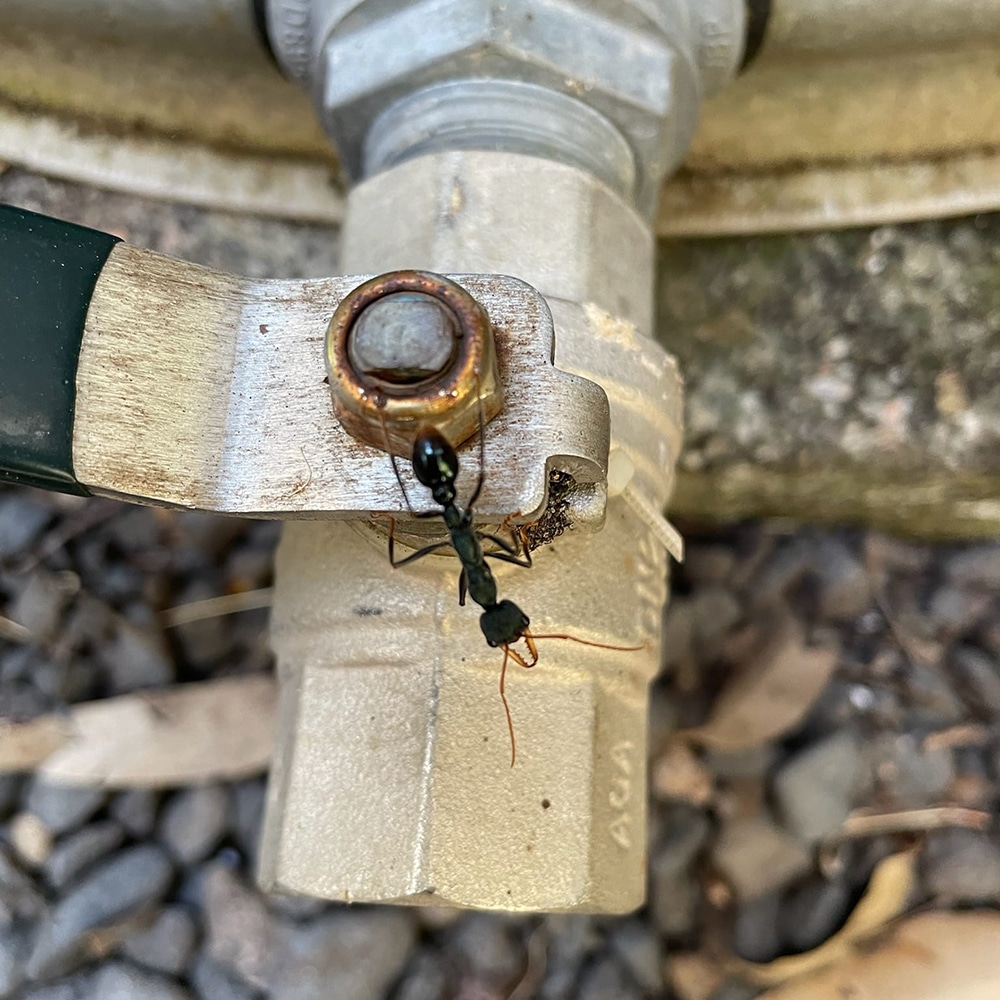
Struggling with ants invading your home? Discover expert Ant Control On The Central Coast NSW with Vital Pest Control.
Ant infestations can be a persistent issue for homeowners on the Central Coast NSW. With the warm climate and abundant natural habitats, ants find the region quite hospitable. Ant baiting systems have emerged as an effective solution, targeting the problem at its source and providing long-term results. Understanding the nuances of these systems can help residents make informed decisions about pest control.
How Ant Baiting Systems Work
Ant baiting systems operate by attracting ants to a bait station filled with a palatable substance mixed with a slow-acting insecticide. The worker ants consume the bait and carry it back to the colony, sharing it with others. This process eventually leads to the death of the queen and the collapse of the colony. The delayed action of the insecticide ensures that the bait is spread widely before the ants perish.
Choosing the Right Bait
Selecting the appropriate bait is crucial for the success of an ant baiting system. Different ant species are attracted to various food sources. Some prefer sweet substances, while others are drawn to proteins or fats. Identifying the ant species in your home can help determine the most effective bait. Professional pest control services often conduct inspections to match the bait with the specific ant problem.
Environmental Considerations
The Central Coast’s unique environment necessitates eco-friendly pest control options. Ant baiting systems are generally less intrusive than sprays, as they target only the ants and minimise chemical exposure to other wildlife. Many baits are designed to be biodegradable and safe for use around pets and children, making them a preferred choice for environmentally conscious residents.
Advantages Over Traditional Methods
Compared to traditional methods like spraying, ant baiting systems provide a more targeted approach. Sprays can be effective in killing visible ants but often fail to address the colony itself. Baits, on the other hand, focus on eliminating the source of the problem. This approach reduces the likelihood of re-infestation and often leads to more sustainable outcomes.
Professional vs DIY Solutions
While DIY ant baiting solutions are available, they may not always achieve the desired results. Professional pest control services on the Central Coast offer the expertise needed to identify ant species and implement the most effective strategies. Professionals also have access to commercial-grade baits, which can be more potent and longer-lasting than over-the-counter options. Hiring a professional can ensure a comprehensive approach to ant management.
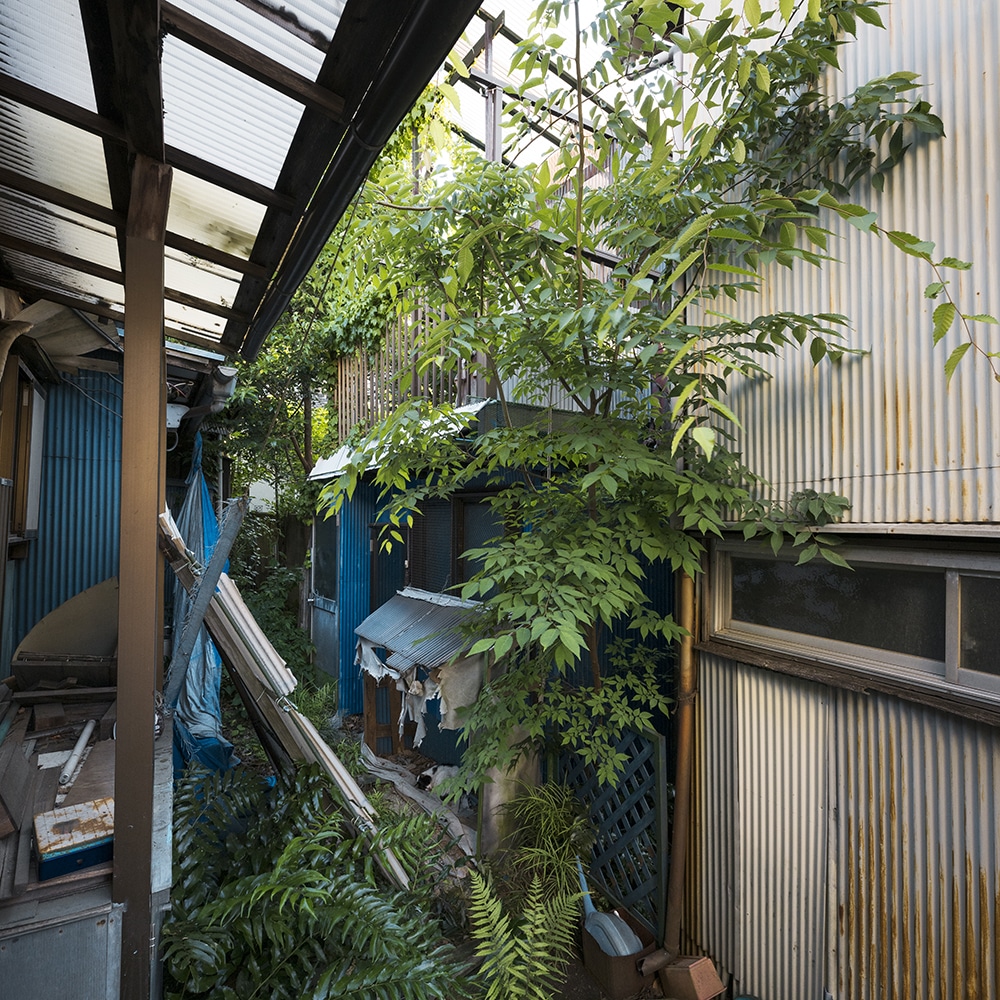
Struggling with pesky ants? Discover effective ant control on the Central Coast NSW with Vital Pest Control.
Ants are a common sight on the Central Coast, NSW, with their nests often hidden in plain view. Understanding where these industrious insects decide to establish their homes can help property owners manage them effectively. Ant nest locations vary depending on the species, environmental conditions, and available resources. Identifying these nesting spots is crucial for effective pest control and maintaining a comfortable living space.
Sandy Soil Preferences
Many ant species on the Central Coast are drawn to sandy soils. This type of soil offers easy excavation, allowing ants to quickly establish their intricate tunnel systems. Gardens and yards with abundant sandy areas often become prime real estate for ant colonies. Property owners should monitor these areas for signs of ant activity, such as small mounds or visible trails.
Moist Environments
Ants frequently seek out moist environments, especially during dry spells. Areas with consistent moisture, like garden beds with frequent irrigation or damp spots near leaky pipes, are attractive to ants. These environments provide the hydration needed for their survival and can support larger colonies. Regularly inspecting and repairing plumbing can help reduce these appealing conditions.
Under Rocks and Pavers
Rocks and pavers offer excellent protection from the elements, making them popular nesting sites. The spaces beneath these structures provide a stable environment with the right balance of warmth and shelter. Homeowners should consider lifting pavers or rocks periodically to check for nests, especially if ant activity is observed nearby.
Inside Wooden Structures
Some ants, like carpenter ants, prefer nesting inside wooden structures. They carve out galleries in wood, which can lead to structural damage over time if left unchecked. Wooden decks, fences, and even house frames can become targets. Regular inspection of these areas, particularly if there are signs of decay or moisture, can help in early detection and prevention.
Near Food Sources
Ants are opportunistic foragers, and nests are often located near abundant food sources. Kitchens, pantries, and outdoor dining areas with crumbs or spills can attract ants. Keeping these areas clean and storing food in airtight containers can deter ants from settling nearby. Observing ant trails can also give clues about the proximity of their nests in relation to food.
Adam Sands - Licenced Pest Technician
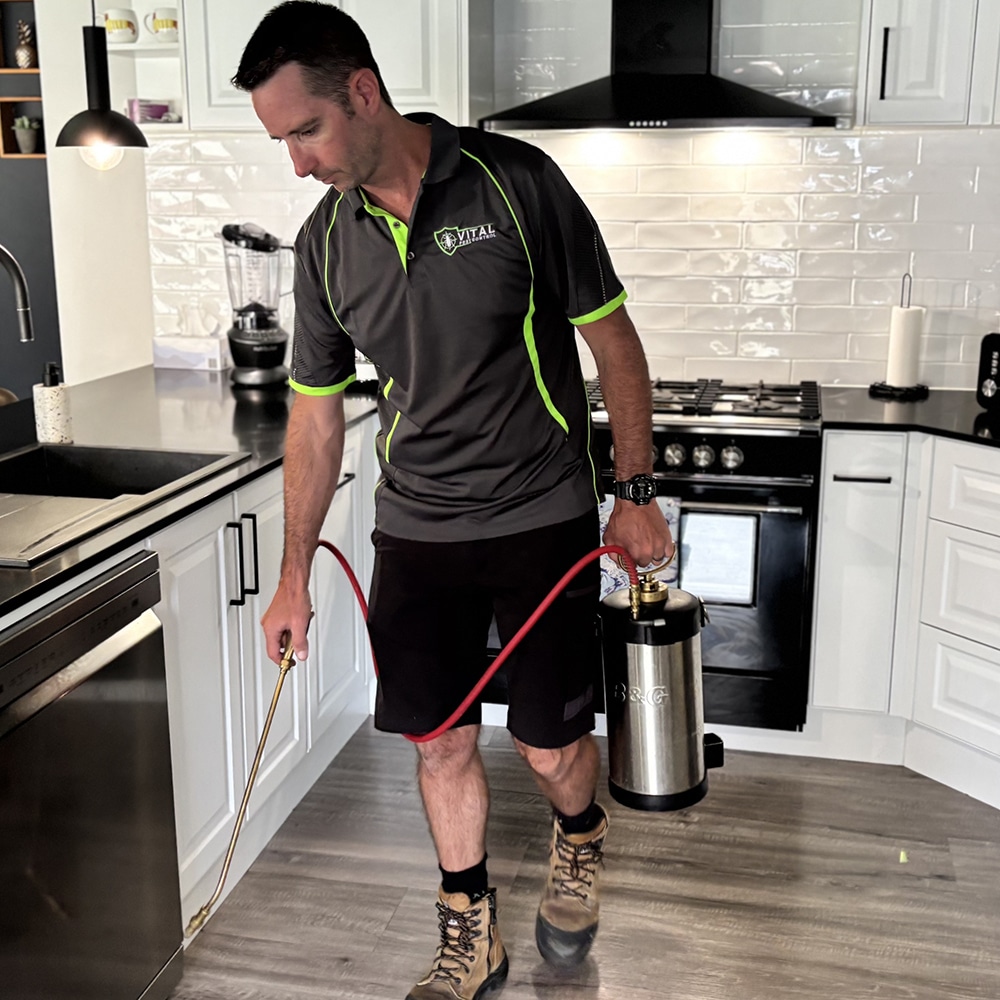
Are carpenter ants causing havoc at home? Discover Vital Pest Control’s expert ant control on the Central Coast NSW for peace of mind.
Carpenter ants are a common concern for homeowners on the Central Coast of NSW. Known for their wood-destroying habits, these ants can cause significant damage if left unchecked. Understanding their behaviour and how to manage them is key to protecting your property.
Understanding Carpenter Ants
Carpenter ants are large, measuring up to 12 millimetres, and are usually black or dark brown. Unlike termites, they do not consume wood but excavate it to create nests. This can weaken wooden structures over time. They are attracted to moist or decaying wood, often indicating a moisture problem in the home.
Signs of Infestation
Detecting carpenter ants early can save you from extensive repairs. Look for piles of wood shavings near wooden structures, which are the remnants of their tunnelling. Another sign is rustling sounds in walls or hollow sounds when tapping on wood. Spotting large, black ants indoors, especially in winter, is another indicator of a possible infestation.
Prevention Methods
Preventing carpenter ants involves managing moisture and sealing entry points. Repair leaks and improve drainage around your home to reduce moisture. Trim trees and shrubs away from the house to limit access. Seal cracks and openings in foundations and around windows to block ant entry. Regularly inspect and maintain wooden structures to catch any issues early.
Treatment Options
When dealing with an infestation, professional pest control services are often necessary. They can accurately locate nests and apply effective treatments. For minor issues, bait stations can be used. These attract ants and allow them to carry poison back to their nests. Always follow product instructions carefully for safe and effective results.
Professional Help
Engaging a pest control expert on the Central Coast ensures a thorough approach to managing carpenter ants. Professionals use specialised equipment to detect and eliminate nests. They also provide advice on long-term prevention, helping you safeguard your home against future invasions.

Struggling with pesky ants? Vital Pest Control offers expert ant control on the Central Coast NSW.
Ants are a common sight on the Central Coast of New South Wales, and they play different roles depending on whether they dwell outdoors or indoors. Understanding the distinctions between outdoor and indoor ants can help residents manage and control their presence effectively. Each type has its unique behaviours, habitats, and impact on human environments.
Outdoor Ants: Roles and Habitats
Outdoor ants are essential players in the ecosystem. They aerate soil, disperse seeds, and control pest populations. These ants usually build their nests in soil, under rocks, or within decaying wood. They thrive in gardens, lawns, and bushland areas. On the Central Coast, it’s common to see species like green tree ants or bull ants, which play a part in maintaining ecological balance. However, when their numbers grow, they might invade homes in search of food, particularly during dry seasons.
Indoor Ants: Unwanted Guests
Indoor ants often become a nuisance due to their relentless search for food and water. They invade kitchens, pantries, and bathrooms, drawn by crumbs, spills, and moisture. Common indoor ants on the Central Coast include the black house ant and the Argentine ant. These ants form trails leading from their outdoor nests to food sources inside homes. They can be persistent, making them challenging to control without proper measures.
Impact in Human Environments
While outdoor ants contribute positively to the natural environment, indoor ants can pose problems for households. They contaminate food, spread bacteria, and can even damage structures by nesting in walls or foundations. On the Central Coast, maintaining a clean and sealed home can help deter these pests. Using natural deterrents like vinegar or commercial ant baits can also be effective.
Strategies for Control and Prevention
To manage ants effectively, combining prevention and control methods is crucial. For outdoor ants, keeping gardens tidy and removing potential nesting sites can limit their numbers. For indoor ants, sealing entry points, storing food in airtight containers, and maintaining cleanliness are key strategies. Professional pest control services can provide targeted treatments, especially for persistent infestations. On the Central Coast, local pest experts understand the specific ant species and environmental factors affecting the area.
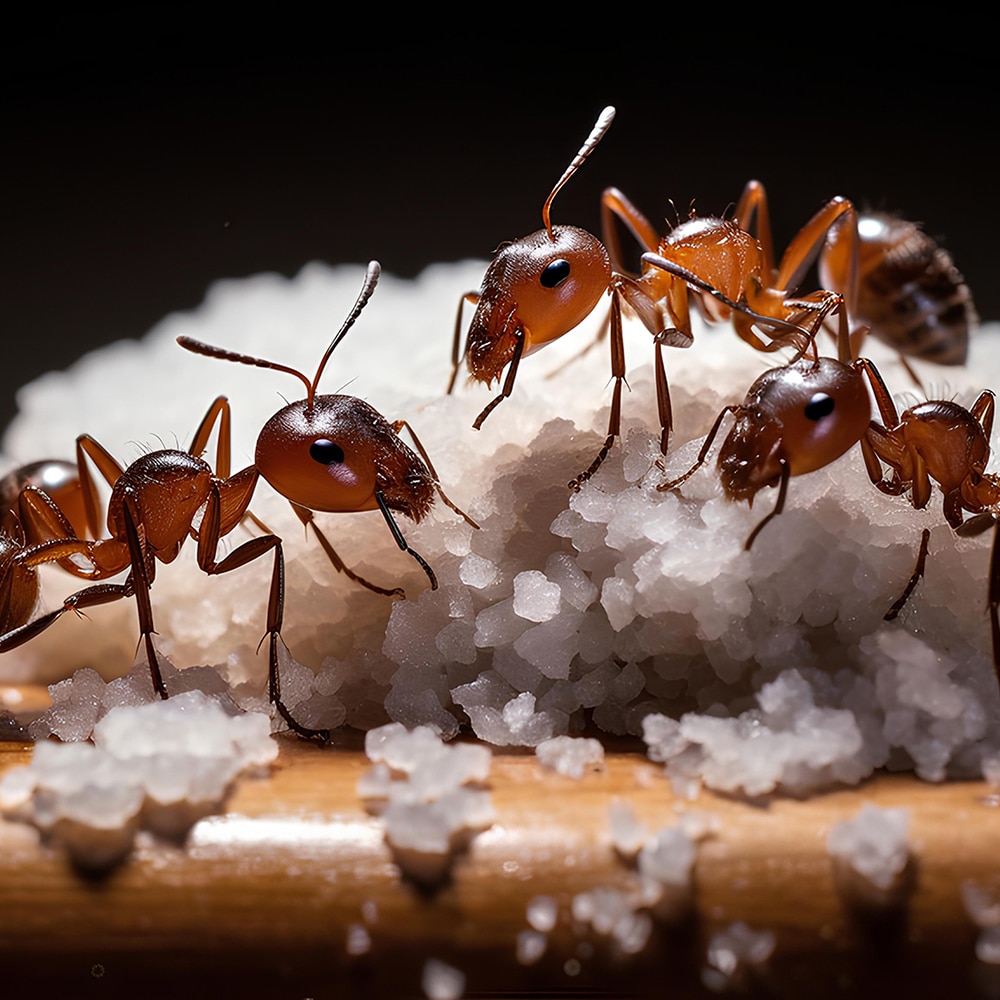
Struggling with persistent ant invasions? Discover effective ant control on the Central Coast NSW today.
Living on the Central Coast NSW provides a unique blend of coastal beauty and vibrant community life. However, maintaining proper food storage and sanitation is crucial to enjoy healthy and safe culinary experiences. Whether you’re storing fresh produce from local markets or preserving homemade delights, understanding food storage and sanitation practices is essential.
Understanding Proper Food Storage Techniques
Proper food storage not only prolongs the life of your groceries but also prevents foodborne illnesses. In Central Coast’s humid climate, it’s important to keep perishables in the right environment. Refrigerate items like dairy, meats, and seafood promptly to maintain freshness. Use airtight containers for dry goods to keep out moisture and pests. Label your storage containers with dates to track freshness, ensuring you consume items before they spoil.
Importance of Sanitation in Food Preparation
Sanitation is key to preventing contamination while preparing meals. Regularly clean kitchen surfaces with disinfectants suitable for food preparation areas. Rinse fruits and vegetables under running water to remove dirt and pesticides. Use separate cutting boards for raw meats and vegetables to avoid cross-contamination. Ensure all kitchen utensils and appliances are cleaned thoroughly after each use.
Storing Local Produce Effectively
The Central Coast is known for its fresh, local produce. To keep fruits and vegetables fresh longer, store them in the fridge’s crisper drawer. Some produce, like tomatoes and bananas, ripen quicker at room temperature. Keep these on a countertop but away from direct sunlight. For herbs, trim the ends and place them in a glass of water, covered loosely with a plastic bag, and store in the fridge.
Food Waste Management and Sustainability
Reducing food waste is an important aspect of food storage and sanitation. Plan meals to ensure you buy only what you need. Compost organic waste to contribute to local sustainability efforts. Many Central Coast communities offer composting programs, which are a great way to reduce food waste. By managing waste effectively, you contribute to a cleaner environment and help maintain the pristine beauty of the Central Coast.
Please leave your details in the form and we will call you back the same day.
So that we can process your enquire efficiently please leave as many details as possible and upload any relevant images. (.jpg and .png format)

• Reliable And Trustworthy
• Responsive Proactive Solutions
• Detail-focused for lasting results
We are ready to help you with Cockroaches, Spiders, Ants, Wasps, Fleas, Termites, Rodents, and Possum Relocation.
Call Adam on 0431 222 894 for Responsive Pest Control Services on The Central Coast NSW, Newcastle and The Hunter Valley.
Homeowners Business Owners Shopping Centre Management Real Estate Agents
It may also be an urgent or time-sensitive situation.
If you have questions just reach out to Adam on 0431 222 894 and he’ll be happy to help you.
Identifying different ant species can be a bit tricky, but understanding their features helps. With over 1,300 species in Australia, recognising ants involves observing size, colour, and behaviour. Let’s dive into some essential tips to help you pinpoint those pesky critters.
Observe Size and Colour
Ants range from tiny to larger sizes, with varying colours from black to red. For instance, the common black garden ant is small and dark, while the bull ant is larger and red. Spotting these differences aids in distinguishing between species.
Examine Behaviour
Behaviour can also give clues. Some ants, like the aggressive bull ant, are solitary, while others, like sugar ants, form large trails. Observing how ants interact with their surroundings helps in identification.
Look at Antennae and Body Shape
Antennal shape and body segmentation are key identifiers. Ants have elbowed antennae and segmented bodies with a narrow waist. Variations in these can indicate species. For example, the bulldog ant has a distinctive, robust physique.
Check Habitat
Different species prefer varied environments. Coastal brown ants love sandy soils, while carpenter ants favour wood. Knowing where ants thrive can narrow down possibilities and aid in correct identification.
Need expert help with ant identification or pest control? Our specialists are ready to assist. Contact Us for professional advice and solutions.
Searching for the most effective ant baiting system? You’re not alone. Ants can be a persistent nuisance. With the right baiting system, you can tackle the problem head-on. Here’s what you need to know to choose the best solution for your home.
Understanding Ant Behaviour
Ants communicate through pheromones, which they use to find food and alert others in the colony. Baiting systems exploit this behaviour by attracting ants with irresistible food, laced with a slow-acting insecticide. This ensures the poison spreads throughout the colony, leading to its eventual collapse.
Types of Ant Baits
Gel baits and bait stations are the most common. Gel baits are versatile and can be applied in cracks and crevices, while bait stations are enclosed, making them ideal for homes with pets or children. Choose based on where you notice ant activity for the best results.
Proper Placement for Success
Place baits along ant trails for maximum effectiveness. Ants will follow the trails to the bait, carrying it back to the nest. Avoid using sprays near the bait, as this can repel ants from the area. Consistent placement increases the likelihood of success.
Monitoring and Maintenance
Check your baits regularly. Replenish them if they’re being consumed rapidly or if they dry out. Persistent monitoring ensures the bait remains effective until the entire colony is eliminated. A proactive approach can prevent future infestations.
Ready to tackle your ant problem effectively? For expert advice and tailored solutions, Contact Us today. Our team is here to help you reclaim your home from pests.
Finding ant nests can be tricky, but understanding their habits helps. Ants usually build nests near food and water. Spotting a trail of ants often leads to their colony. Keep your eyes peeled for these trails, especially near kitchens or gardens.
Look for Ant Trails
Ant trails are like highways. They connect the nest to food sources. Follow these trails to locate the nest. Trails often lead from crumbs in your kitchen to hidden nest sites. Check along skirting boards or garden paths where ants might travel.
Check Moisture Areas
Ants love moisture. Bathrooms, kitchens, and gardens are prime spots. Look around sinks, tubs, and any damp soil. Ants are drawn to these areas, making them likely places for nests. Spotting a nest here means you might have a moisture problem to fix.
Inspect Soil and Wood
Some ants build in soil or wood. Check your garden beds and any rotting wood. Carpenter ants, for instance, nest in decaying wood. Keeping wood dry and soil tidy can help manage these pests. Regularly inspect these areas to catch infestations early.
Finding ant nests early helps manage infestations effectively. For persistent problems or professional advice, reach out to experts. Contact Us today for tailored pest control solutions.
Carpenter ants might seem harmless at first, but they can cause significant damage to your home. Unlike termites, these ants don’t eat wood, but they excavate it to create their nests. This behaviour can weaken the structure of your property over time.
Structural Damage
Carpenter ants tunnel through wood, which can lead to structural issues in your home. They prefer damp, decaying wood, but if the infestation grows, they may expand into sound wood. This can result in costly repairs if not addressed promptly.
Signs of Infestation
Look out for piles of wood shavings, particularly under wooden beams or near windows. You might also notice faint rustling sounds within walls. Spotting these signs early can help prevent extensive damage to your home.
Preventive Measures
Keep an eye on moisture levels in your home as damp conditions attract these ants. Ensure proper ventilation and fix leaks promptly. Removing decayed wood from your property can also deter carpenter ant infestations.
Professional Help
If you suspect a carpenter ant infestation, it’s wise to consult with pest control experts. They can assess the situation and provide effective solutions to safeguard your home from further damage. For professional advice, Contact Us today.
Ants can be a real nuisance, whether they’re marching across your kitchen counter or invading your outdoor spaces. Knowing how to treat outdoor versus indoor ants effectively can make all the difference in keeping your home ant-free.
Outdoor Ant Control
When dealing with outdoor ants, the aim is to disrupt their colony. Use bait stations around the perimeter of your home. This method lures ants to take the poison back to their nest, effectively targeting the entire colony. Ensure bait stations are pet-safe for peace of mind.
Indoor Ant Elimination
Indoor ants often seek food and water. Start by sealing food in airtight containers and wiping down surfaces regularly. Use indoor-safe ant bait near entry points. This approach not only removes ants but also prevents future invasions by targeting their entry routes.
Prevention Tips
Regularly inspect your property for cracks and seal them to block entry. Keep gardens tidy, as overgrown plants can attract ants. Regularly check for leaks, as moisture attracts ants. Implementing these preventative measures reduces the chances of ants returning.
Need professional help with ant control? Contact Us for expert advice on keeping your home ant-free. Our team is ready to assist you with tailored solutions for your pest problems.
Ants are tiny but mighty when it comes to invading homes and properties. Understanding what draws them in can help you keep them out. Let’s explore some common attractions for ants and how to prevent them.
Food Sources
Ants are on the hunt for food. Leftover crumbs, sugary spills, and unsealed packets can lure them in. Regularly clean kitchen surfaces and store food in airtight containers to deter these persistent visitors. A tidy kitchen can be your first line of defence.
Moisture
Ants need water. Leaky taps, damp areas, or standing water can attract them. Fix leaks promptly and ensure good ventilation in your home to reduce moisture. A dry home is less appealing to ants and can keep other pests at bay too.
Entry Points
Ants enter through cracks and gaps. Weather-stripping doors and sealing windows can block their pathways. Inspect your property for potential entry points and secure them to minimise access. Small gaps can lead to big problems if not addressed.
Keep these tips in mind to maintain an ant-free home. If you’re dealing with a persistent ant problem, professional help is just a click away. Contact Us for expert pest control solutions.
Curious about how long ant treatment takes to work? You’re not alone. Many homeowners want quick solutions to their pest problems. Let’s explore the timeline and effectiveness of ant treatments.
Initial Effects
After applying ant treatment, you might notice fewer ants within a few days. Most treatments start working immediately, attacking the ants you see and those hiding. It’s normal to see some activity initially as the treatment disturbs the colony.
Complete Eradication
Total eradication usually takes a couple of weeks. Ants carry the treatment back to their nest, effectively wiping out the colony. Patience is key, as the entire process depends on the size and location of the colony.
Preventative Measures
Keep ants at bay by sealing entry points and maintaining cleanliness. Regular inspections and treatments can prevent future infestations. Remember, a proactive approach is vital in keeping your home ant-free.
For tailored advice and professional ant treatment solutions, reach out to the experts. Contact Us to schedule a consultation today.
Wondering if ant treatments are safe for your garden? It’s a common concern among gardeners. Ants can be a nuisance, but you don’t want to harm your garden’s ecosystem. Let’s explore some facts and tips to keep your garden healthy while managing ants effectively.
Understanding Ant Treatments
Most ant treatments are designed to target ants specifically, minimising harm to plants and beneficial insects. However, it’s crucial to choose the right product. Organic or natural options, like diatomaceous earth or citrus oil, can be effective and gentle on your garden’s environment.
Impact in Garden Ecosystem
Some ant treatments might affect non-target species. It’s wise to apply treatments selectively and sparingly. Consider spot treatments around ant nests rather than widespread application. This approach helps protect bees and other pollinators while managing your ant problem.
Safety Tips for Application
When applying ant treatments, follow instructions closely. Wear gloves and avoid windy days to prevent drift. Aim for early morning or late afternoon to reduce impact on beneficial insects. Keeping these practices in mind ensures your garden stays vibrant and healthy.
Looking for more advice on managing ants in your garden? Contact Us for expert guidance tailored to your needs. Our team is here to help you protect your garden without compromising its natural beauty.
Keeping ants at bay can be tricky. They seem to pop up when you least expect them. But with a few smart strategies, you can prevent these tiny invaders from returning. Here’s how to keep your home ant-free.
Seal Entry Points
Ants sneak in through tiny gaps. Check around windows, doors, and walls for cracks. Use caulking to seal them. Pay attention to areas where cables and pipes enter your home. By blocking these paths, you make it harder for ants to find their way inside.
Maintain Cleanliness
Ants are drawn to food remnants. Ensure no crumbs or spills are left behind. Regularly wipe down kitchen counters and floors. Store food in airtight containers. This removes potential food sources, discouraging ants from sticking around.
Use Natural Repellents
Essential oils like peppermint or tea tree can repel ants. Mix a few drops with water and spray around entry points. This not only deters ants but leaves your home smelling fresh. Remember, these solutions need regular reapplication for continued effectiveness.
Regularly Inspect and Maintain
Routinely check your home for signs of ants. If you spot any, act quickly. Early intervention can prevent a full-blown infestation. Keeping an eye on potential problem areas ensures you stay ahead of the game, reducing the chance of reinfestation.
By staying proactive, you can keep ants at bay. For professional pest control, Contact Us for expert advice and solutions.
Ants are fascinating yet sometimes pesky creatures. So, when are ants most active? Understanding their activity patterns can help you manage them better. Let’s delve into the times of year when ants are bustling around your home or garden.
Spring and Summer Activity
Ants thrive in warmer months, making spring and summer their peak activity periods. During these times, ants forage for food and water, often invading homes. Warmer weather prompts ants to build new colonies, increasing their presence both indoors and outdoors.
Why Ants Swarm
Ants swarm primarily to mate and establish new colonies. This usually happens after rain when the soil is soft. If you notice swarms, it’s a clear sign that ants are reproducing and expanding their reach. Managing them early can prevent infestations.
Tips to Manage Ant Activity
Seal food containers to deter ants from invading your pantry. Regularly clean surfaces to remove food residues. If ants become a persistent problem, it might be time to seek professional help. For expert advice and solutions, Contact Us to keep your home ant-free.
Need Some Advice From A Professional Pest Technician?